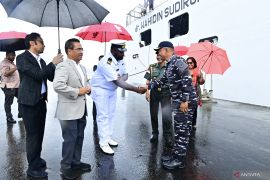The declaration is effective for a period of 30 days starting from Saturday, said Meleti Bainimarama, permanent secretary for rural and maritime development and national disaster management.
"As your national disaster and controller who will be responsible for this operations and together with the Disaster Management Committee (DISMAC) machinery and resources of the government, we will do our best to maintain and uphold your interest and the interest of Fiji," Bainimarama said, according to the FBC.
Winston took an incredibly unusual path to get to where it is right now winding through the South Pacific and crossing over a single island twice. The cyclone passed Tonga's island of Vavau once earlier this week as a category 2, and then strengthened, turned and passed over the same islands again as a category 4. Australias ABC News reports that Vavau fared better than expected as Cyclone Winston passed by.
Since then, Winston grew even stronger, exploding into a category 5 cyclone on the Australia scale, with 145 mph winds, the equivalent of a strong category 4 hurricane in the Atlantic. The Fiji Meteorological Service estimates that Winstons wind gusts are 295 kilometers per hour, or around 180 mph.
In regions of the world where direct observations, like hurricane hunters, are not available, satellite estimates are used to ascertain the intensity of the cyclone. This method is called the Dvorak technique. After all the elements of the storm are analyzed "things like cloud cover, the eye, banding and shear", a final Dvorak number is given on a scale from one to eight. On Friday, Winston was given an eight.
This would suggest the cyclone is much stronger than the current 145 mph wind speed estimate, and that it could be harboring wind speeds up to 190 mph.
Though Fiji is prone to tropical weather in the South Pacific, the main island of Viti Levu doesnt necessarily have a history plagued with disastrous cyclones.
But no cyclone of this severity has made direct landfall on the island, which is what Winston is expected to do. In fact, the strongest cyclone to make direct landfall on the island did so over 30 years ago: Nigel in 1985, with 120 mph winds.
Editor: Priyambodo RH
Copyright © ANTARA 2016












